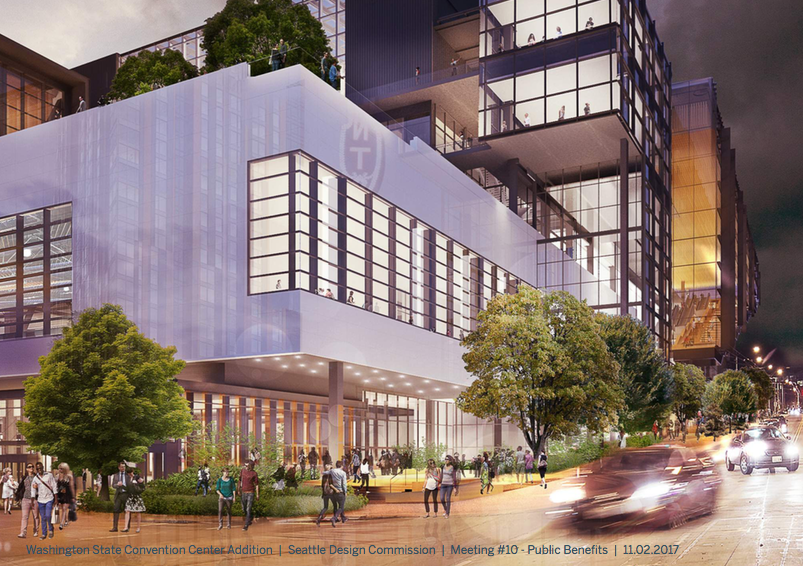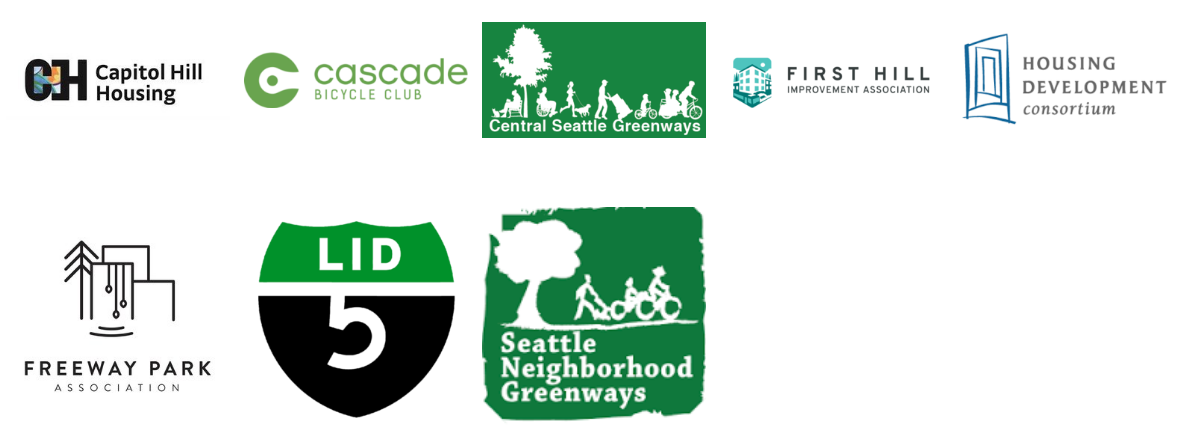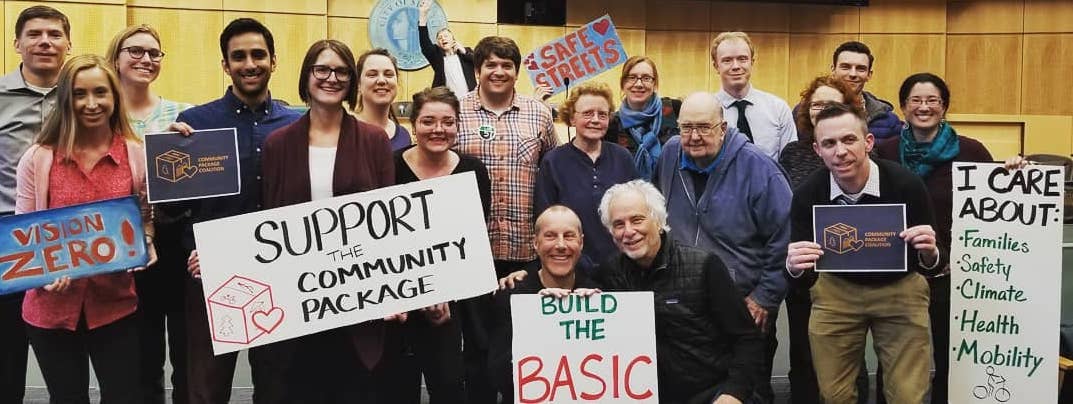How the Community Package was Won
- gordon
- June 8, 2018
EDITORS NOTE: You probably have heard that we won $83 million for walking, biking, parks, and affordable housing paid for by the Washington State Convention Center expansion project, but have you heard the full story? Let Central Seattle Greenways co-leader Brie Gyncild tell you the inside story of how it all came together.
Story by Brie Gyncild, Central Seattle Greenways. What's an alley worth? Or the area underneath a city street? When a developer asks to assume public property for private development, it’s called a street or alley "vacation" and they have to provide a commensurate public benefit. The Washington State Convention Center required alley and underground street vacations to make their project work and therefore they needed to provide public benefits.Use of public resources—what do we, the public, get back in exchange?
The proposed Washington State Convention Center Addition is a colossal undertaking, with a design that depends on the City vacating multiple alleys and the right of way under some major downtown streets. The $1.6 billion expansion is one of the largest developments in Seattle history and is to be built on publicly owned land, by a public entity, and using public funding. Seizing the opportunity to shape the project’s public benefits, several community groups and nonprofits set about advocating—separately—to have their individual projects included in the public benefits package.
For our part, Seattle Neighborhood Greenways was focused on obtaining funding for protected bike lanes in the Pike/Pine corridor and on 8th Avenue, as well as pedestrian safety improvements on the I-5 overpasses on Pike Street, Pine Street, and Olive Way. Other organizations were advocating for improvements to Freeway Park, a Lid I-5 feasibility study, affordable housing, funding for the Terry Avenue woonerf, and other worthy projects.
Seizing the opportunity to shape the project’s public benefits, several community groups and nonprofits set about advocating—separately—to have their individual projects included in the public benefits package.
For our part, Seattle Neighborhood Greenways was focused on obtaining funding for protected bike lanes in the Pike/Pine corridor and on 8th Avenue, as well as pedestrian safety improvements on the I-5 overpasses on Pike Street, Pine Street, and Olive Way. Other organizations were advocating for improvements to Freeway Park, a Lid I-5 feasibility study, affordable housing, funding for the Terry Avenue woonerf, and other worthy projects.
Stronger together
But we recognized that we'd be stronger if we worked together to gain the investments the community needs most: public open spaces, safe routes for people walking and biking, and homes affordable to working families. So, Seattle Neighborhood Greenways convened a coalition of transportation, parks, and affordable housing organizations to fight for a fair deal. The Community Package Coalition, as we call ourselves, is made up of our own neighborhood groups Central Seattle Greenways and the First Hill Improvement Association, as well as Capitol Hill Housing, Cascade Bicycle Club, the Freeway Park Association, the Housing Development Consortium, Lid I-5, and Seattle Neighborhood Greenways. Pooling our limited resources, we galvanized public support through months of public outreach, public tours of the convention center sites and the benefits included in the Community Package, meetings with City Council members, public comment at Seattle Design Commission meetings, and significant press coverage.
Thousands of hours of effort paid off when we successfully negotiated $61 million in public benefits with the developer of the Convention Center Addition. This investment, in addition to the $20 million already proposed by the Convention Center, is commensurate with the scale of the vacation petition and is comparable to other recent large, multi-block developments.
Pooling our limited resources, we galvanized public support through months of public outreach, public tours of the convention center sites and the benefits included in the Community Package, meetings with City Council members, public comment at Seattle Design Commission meetings, and significant press coverage.
Thousands of hours of effort paid off when we successfully negotiated $61 million in public benefits with the developer of the Convention Center Addition. This investment, in addition to the $20 million already proposed by the Convention Center, is commensurate with the scale of the vacation petition and is comparable to other recent large, multi-block developments.

An historic win: $83 million in public benefits!
We didn't get everything we wanted; negotiations often require compromise. But the final public benefits package is four times the size of the developer's original offer, and ultimately, the community will receive safer biking and walking infrastructure, affordable housing, and much-needed open space. After we reached an agreement with Pine Street Group (the developer of the WSCC Addition), the City Council unanimously approved the vacation and proposed benefits on May 7, granting the Pine Street Group its necessary permits.